台湾设计资讯22
-
【圭侯设计 洪文谅】绿意漫游纵横轴线 天光照映灰调轮廓
-
- 日期:2020-06-19 17:19:00 来源:https://openworld.tv/talk/in/aid/3830.html 作者:OPEN编辑部 点击次数:0
-
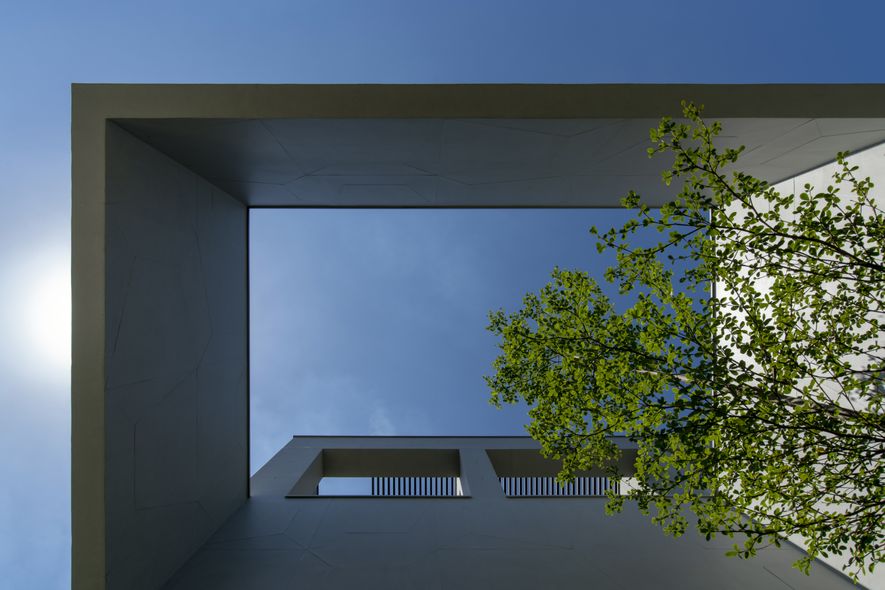
设计概念Design Concept
设计从减筑概念─「建构建筑物时减少佔地面积,聚集生活机能」,回归于虚静底蕴,圭侯设计 洪文谅 设计总监 以虚胜实,以静致动,达成无不为的生活目的,成就静观身心的智慧。
Our design is founded on the idea of minimizing—the less the area of the architecture, the more concentrated the living function—and the maxims of winning by losing using calmness to conquer hastiness. GH DESIGN design director Hung Wen-Liang believes that doing nothing achieves everything and that ultimate wisdom can be developed through the inner reflection of the mind and body.
建筑,在绿意之内,以清水模为材质的几何状外观,贴近使用者角度,只把材料的本质展现,意图令人专注于感受建筑物的空间和光线,任由当代设计家具及单色系陈设,勾勒出场域、机能及形体。当居住者身处其中,感受空间开扬明亮,轴线配合阳光角度,使室内不断与环境交融、对话。
This geometric shaped architecture consisted of an exposed concrete exterior in a lush of greens. By showing construction material as it is helps put the focus on the interaction between space and light as well as user experience. On the other hand, the interior, a monochromatic decor with modern furniture, explores the connection of space, living function and contour. The residents living in this space can feel the spaciousness of the architecture, which takes in sufficient daylight and encourages the dialogue between the environment and the architecture.
家,是不需要伪饰的空间。除减筑外,也减形,让人与家具、人与空间、人与四季、人与环境可以自在对谈,且深刻感受风、雨、光、绿意的生动感受,悄然无声地将生活的期待,写进环境、构组量体、促成生活。
Home is a place where people do not need to pretend. With this in mind, besides minimizing the architecture, unnecessary structure is reduced so that the residents can communicate with the furniture, space, seasons and nature, immersing in the vitality of the wind, rain, light and greens. In essence, this architecture weaves in the beauty of nature and life.
设计重点Design Point
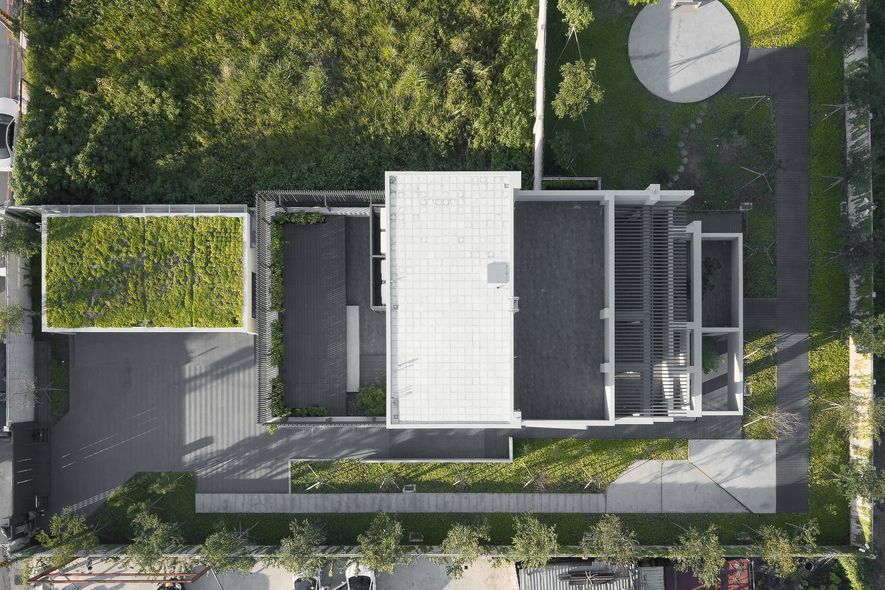
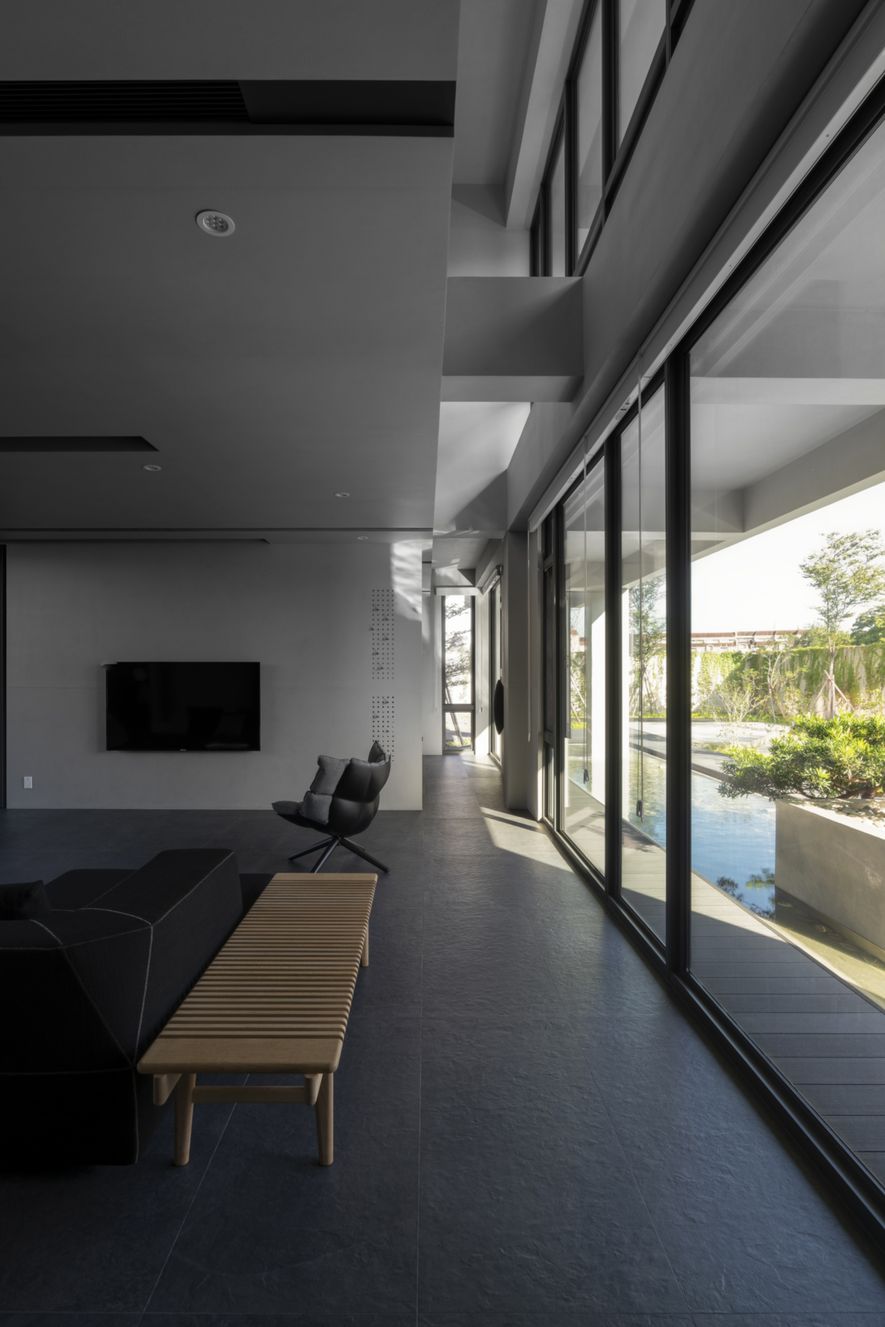
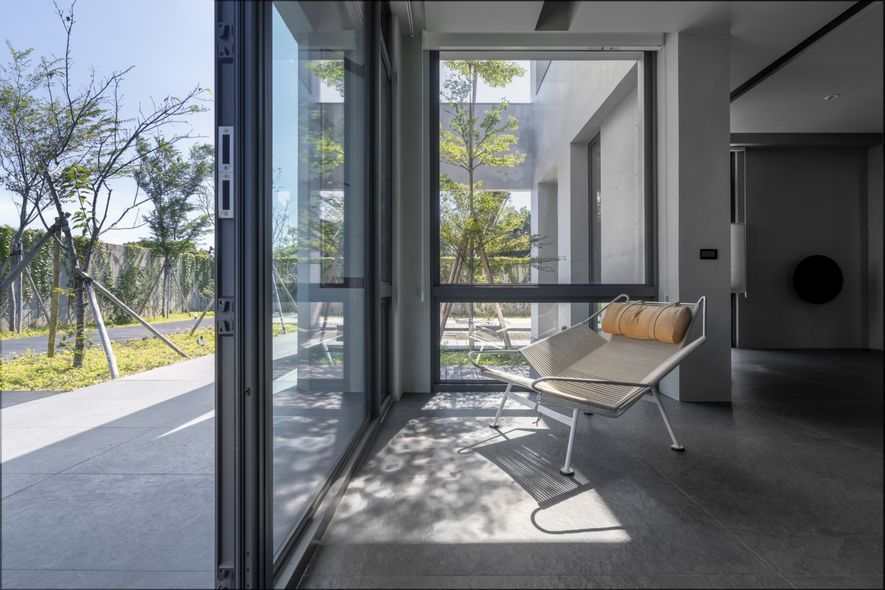
建筑Architecture:
• 基地四周无遮蔽,将自然光线运用至建筑座向、景观绿化与室内空间。绿色植栽与水域,环绕建筑四周,随晨昏光线刻度移转,入景室内外,亦调节局部微气候。
• Nothing surrounds the foundation so that natural light is directed into the faces of the building, the landscape and the indoor space. Shadows of green plants and water surrounding the building are brought indoors as light shifts; at the meantime, they serve the purpose of adjusting the microclimate in small areas so that the living environment is close to the natural environment.
• 从外到裡,着重材料与空间的延续性,特别选用裡外都可以使用的材料,屏除奢华表现,让空间成为一体:
• From inside to outside, the continuality of the materials used and the space is the top priority. Materials suitable for indoors and outdoors are used. Extravagance is abandoned in order to create integrated space.
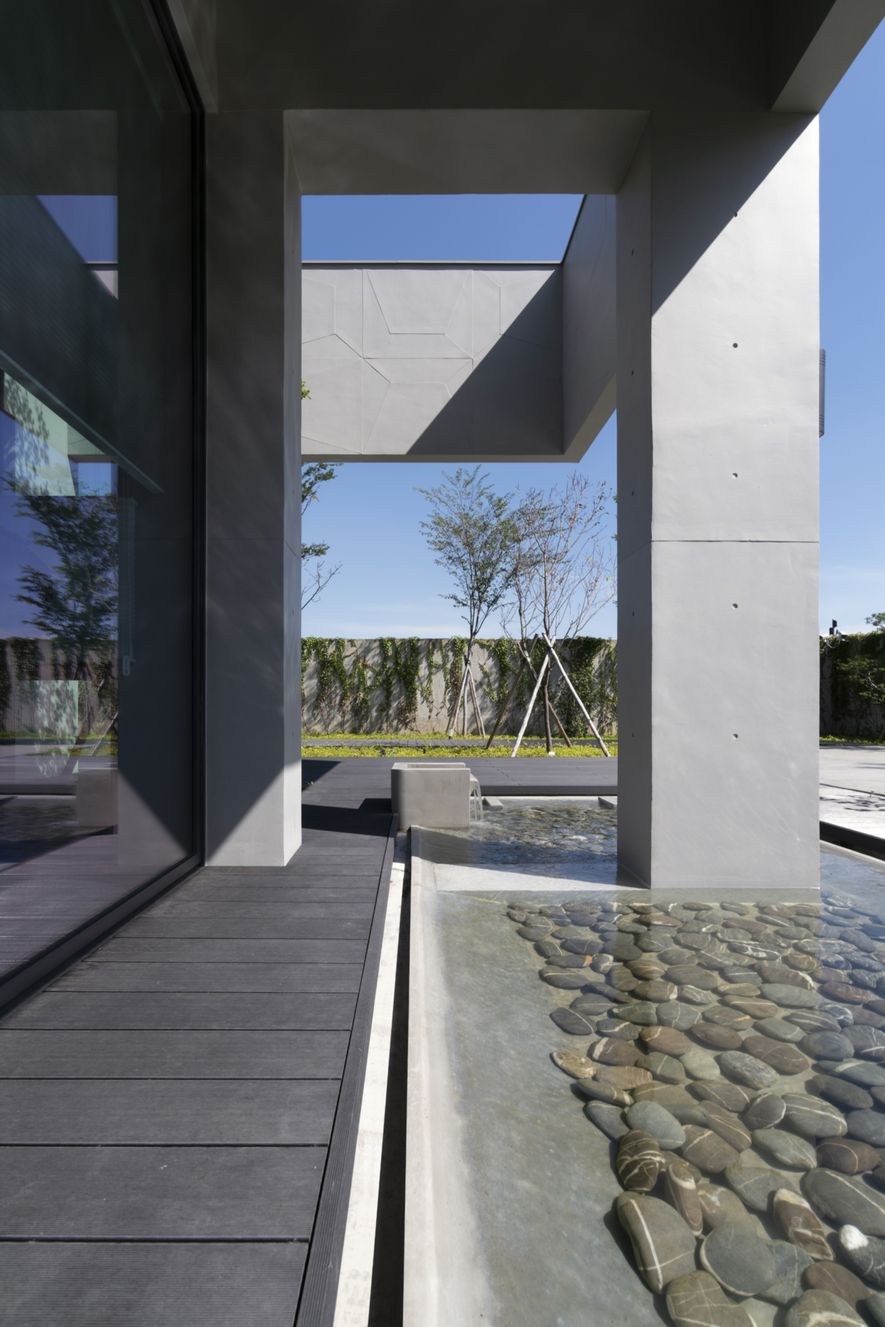
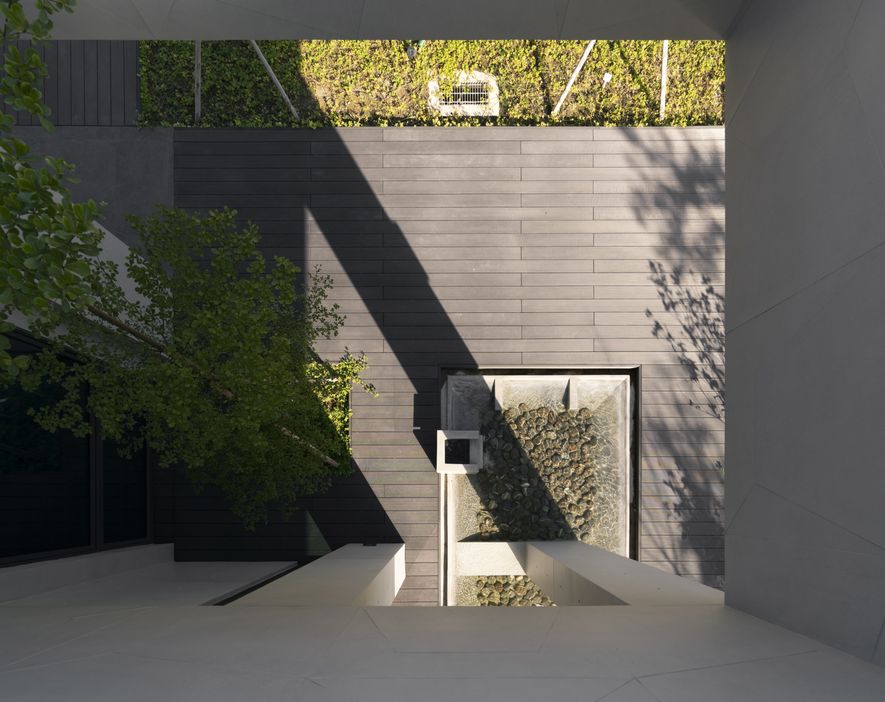
- SA菊水工法清水模:原本为清水模后製,以修补清水模上的瑕疵,现用为内外牆涂料之用。批完土打底之后,打磨、上色,连续上好几道,再从深到浅,压上菱形线条。
• Kikusui Silicone Finish Fair-faced Concrete Formwork: Originally it was the exterior finish of exposed concrete that repairs the defects of fair-faced concrete. It is now used as interior and exterior wall finish. When the silicone base is applied, several layers of polishing and coloring of different shades is required before the impression of lozenge-shaped sealing joints.
- 内外牆桓壁面,呈现柔亮的灰色,从水泥透出来的纹路、水色,随光线移转,光影层次不断变化。
• Faces of both interior / exterior walls are of mellow gray. Textures and colors on the walls display different layers of light and shadow as light hits on the wall shifts.

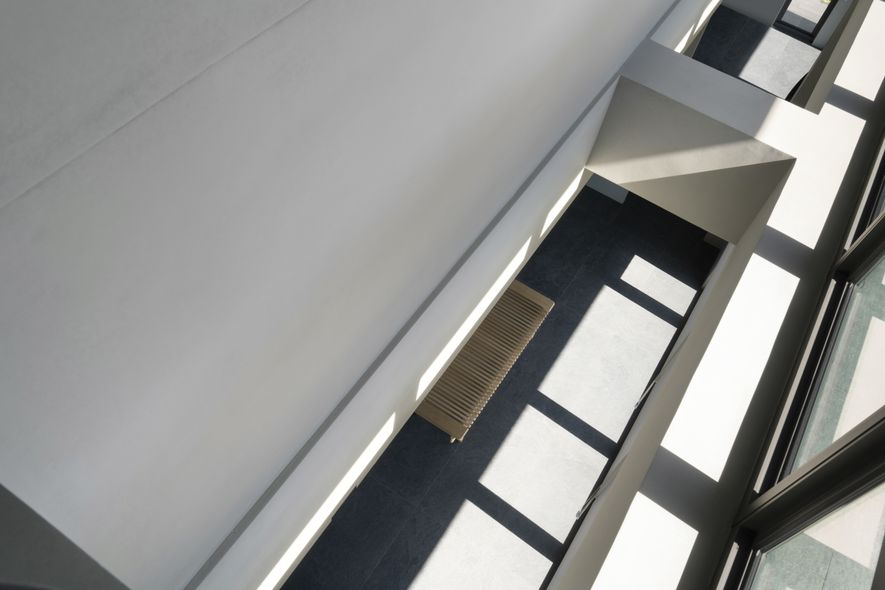
• 每一楼层的开窗採光与室内配置,综和了风水与功能需求性,使得动线进出流畅、明暗有序。
• The locations where windows are installed as well as the indoor layout are the perfect combination of feng shui and functions, creating a smooth traffic flow with appropriate light and darkness.
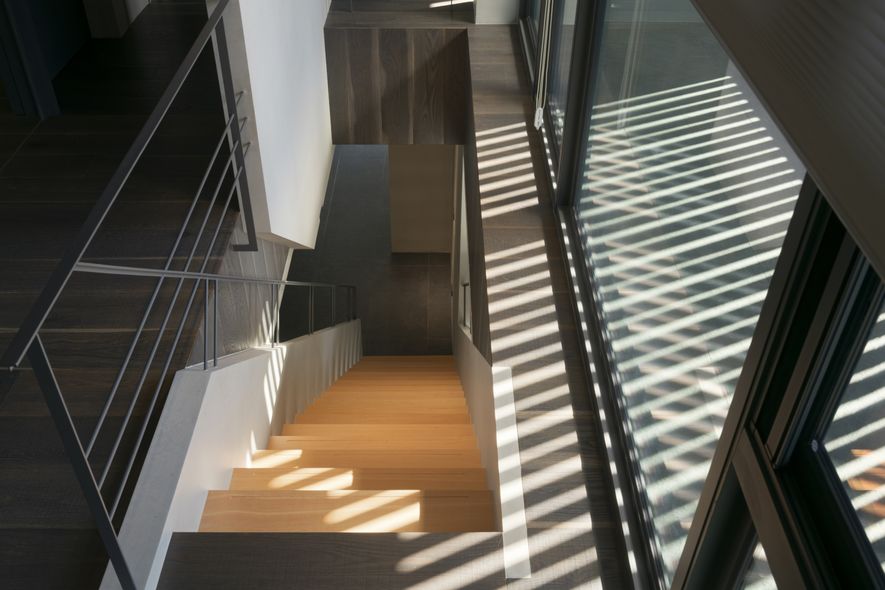
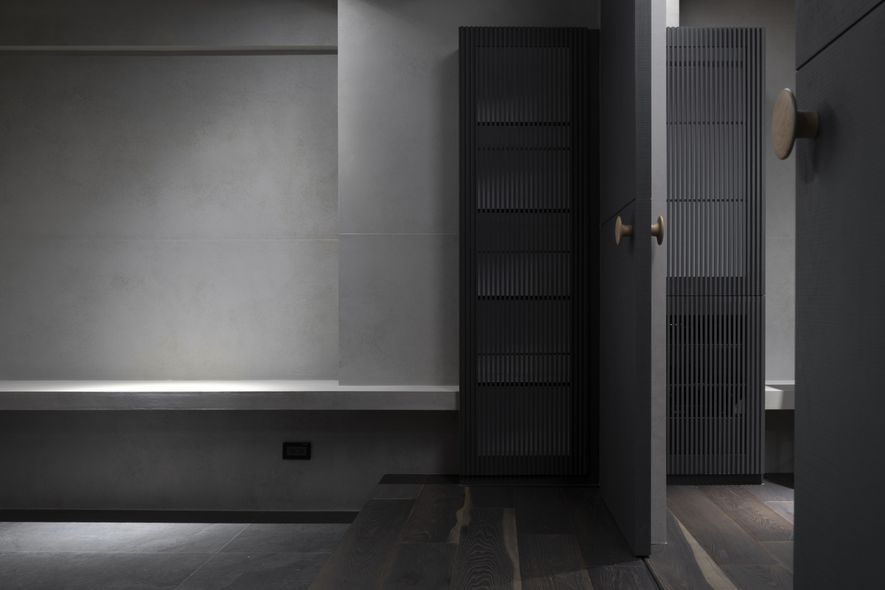
室内Interior:
• 创造空间为裸身的质地,以再加附家具家饰时,能不违和地涵纳彼此。
• The space is created with no decorations at all. When furniture and decorations are put up, they embrace and complete each other harmonically.
• 大片灰牆分隔出室内格局,开、阖、破、立之处,依照光的维度、风的流动与住者起居行为,而形构出适当的居室比例,空间美学亦在此琢磨而出。
• The large gray wall defines the indoor layout. Interior design tricks such as openness, closeness, slop, and divisions are used according to the dimension of light, the flowing of wind and the habits of the inhabitants in order to create appropriate ratio for individual space. Furthermore, aesthetics of the space is being horned here.
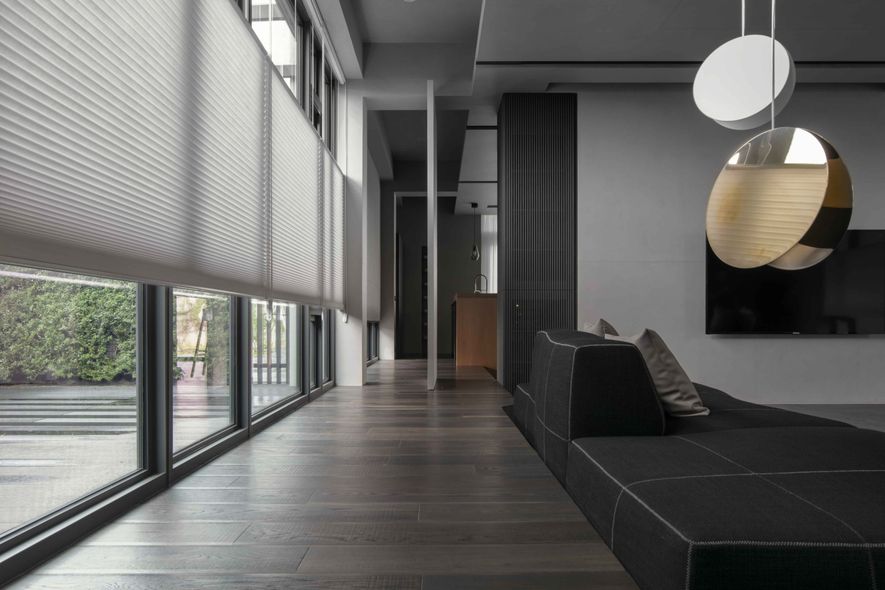
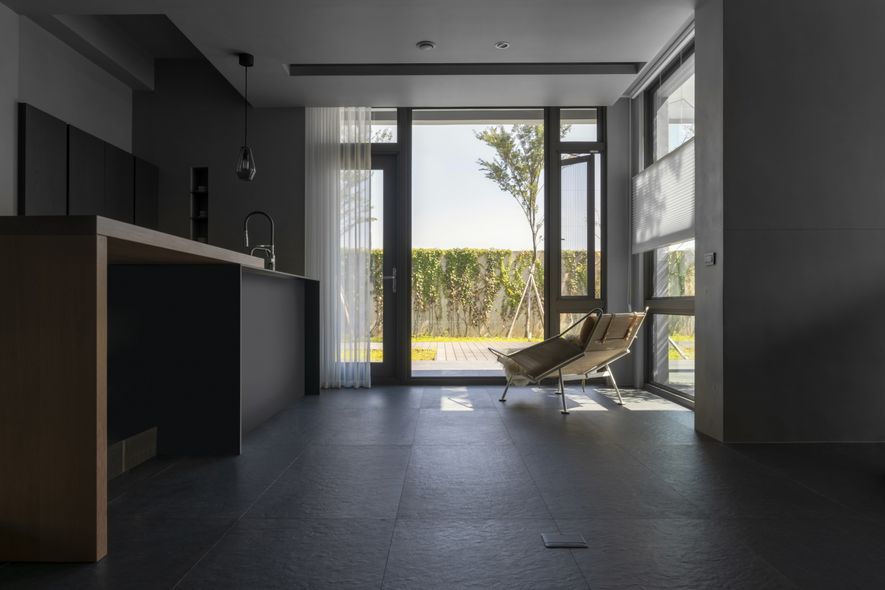
• 居住者思考的是没有访客的完全住家型态,因而需求因而精简至功能与舒适恰如其分,不求展现。一楼为起居室,二楼主卧、书房,三楼小孩房,四楼佛堂,地下室则规划为视听室,以低装饰,尽量淨空空间。
• The ideal design for the inhabitants is a home without visitors. For this reason, the core of the design is about simplicity and to perfectly combine its functions with comfort. The living room is on the first floor; master bedroom and study are on the second floor; children’s rooms are located on the third floor and a Buddhist chapel is on the fourth floor. The basement is the recreation room with minimum decoration to leave as much space there as possible.
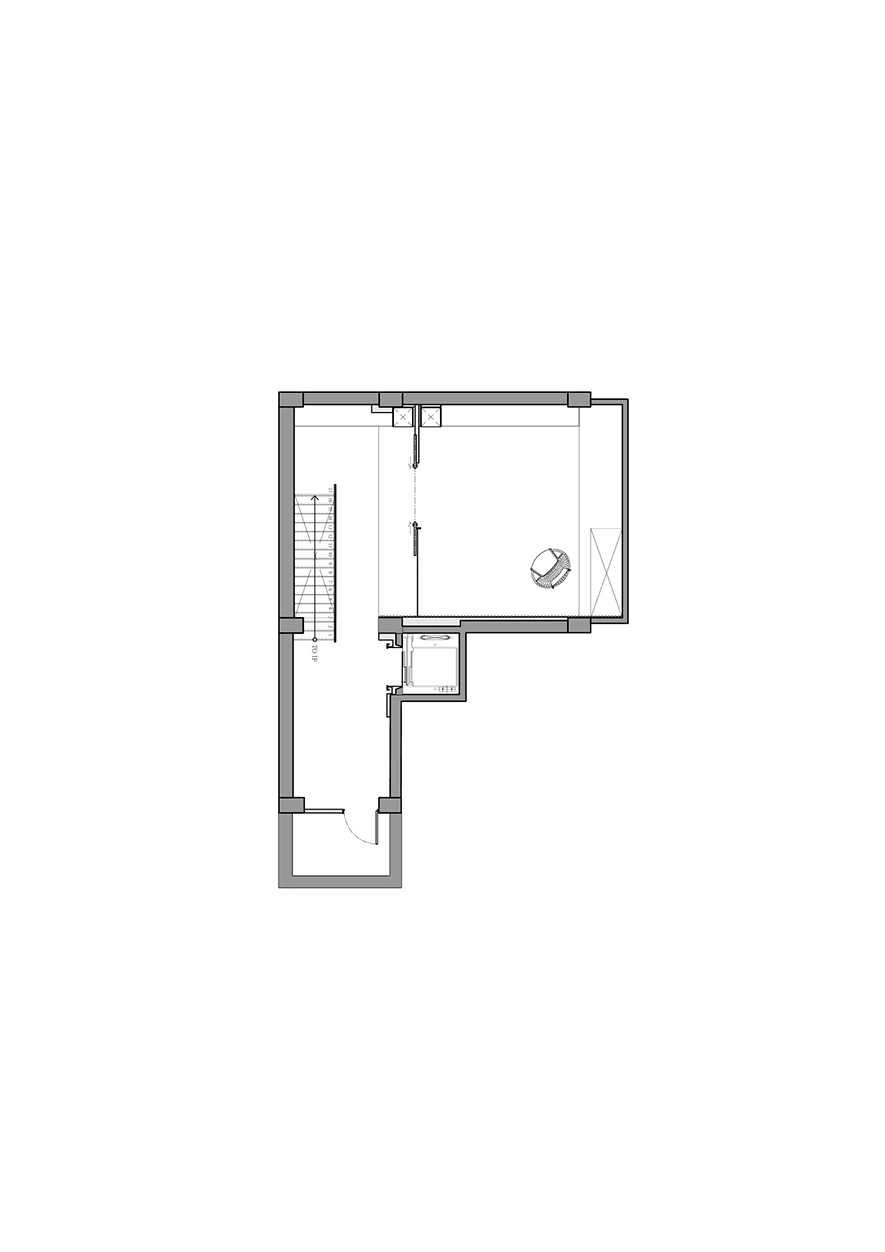
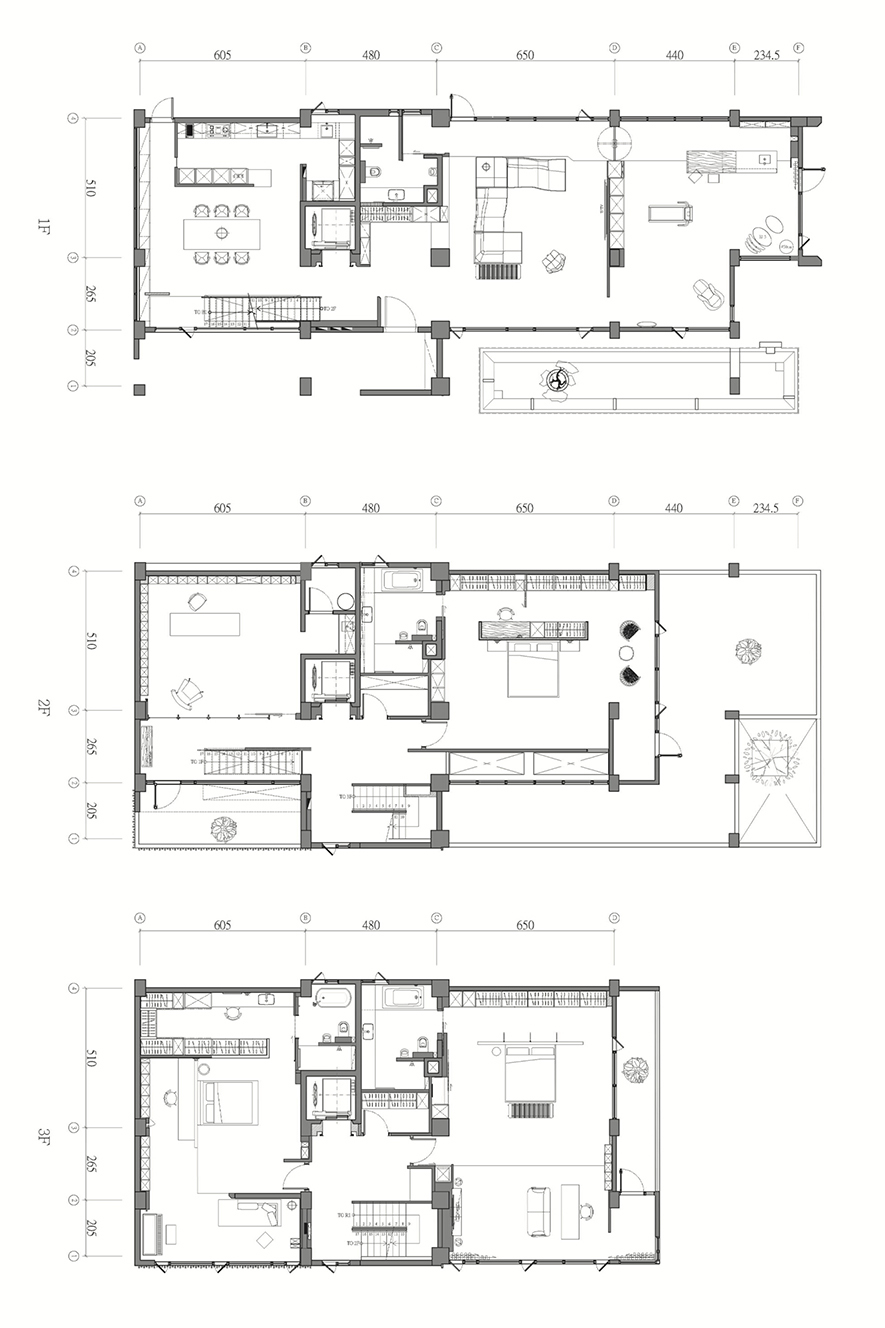
▲平面图
项目资讯
案名:1328号・聚
项目类型:住宅空间
项目地址:台湾桃园
设计团队:圭侯设计
项目坪数:地坪500坪,室内坪数204坪
材质:SA菊水工法清水模
洪文谅
圭侯设计 设计总监
电话:+886-2-2766-5788
地址:台北市松山区民生东路五段69巷2弄11号1楼
信箱:service@ghid-h.com
网址:http://www.ghid-h.com/
OPEN Design 动能开启传媒:http://www.openworld.tv/talk/
第1页 共1页













